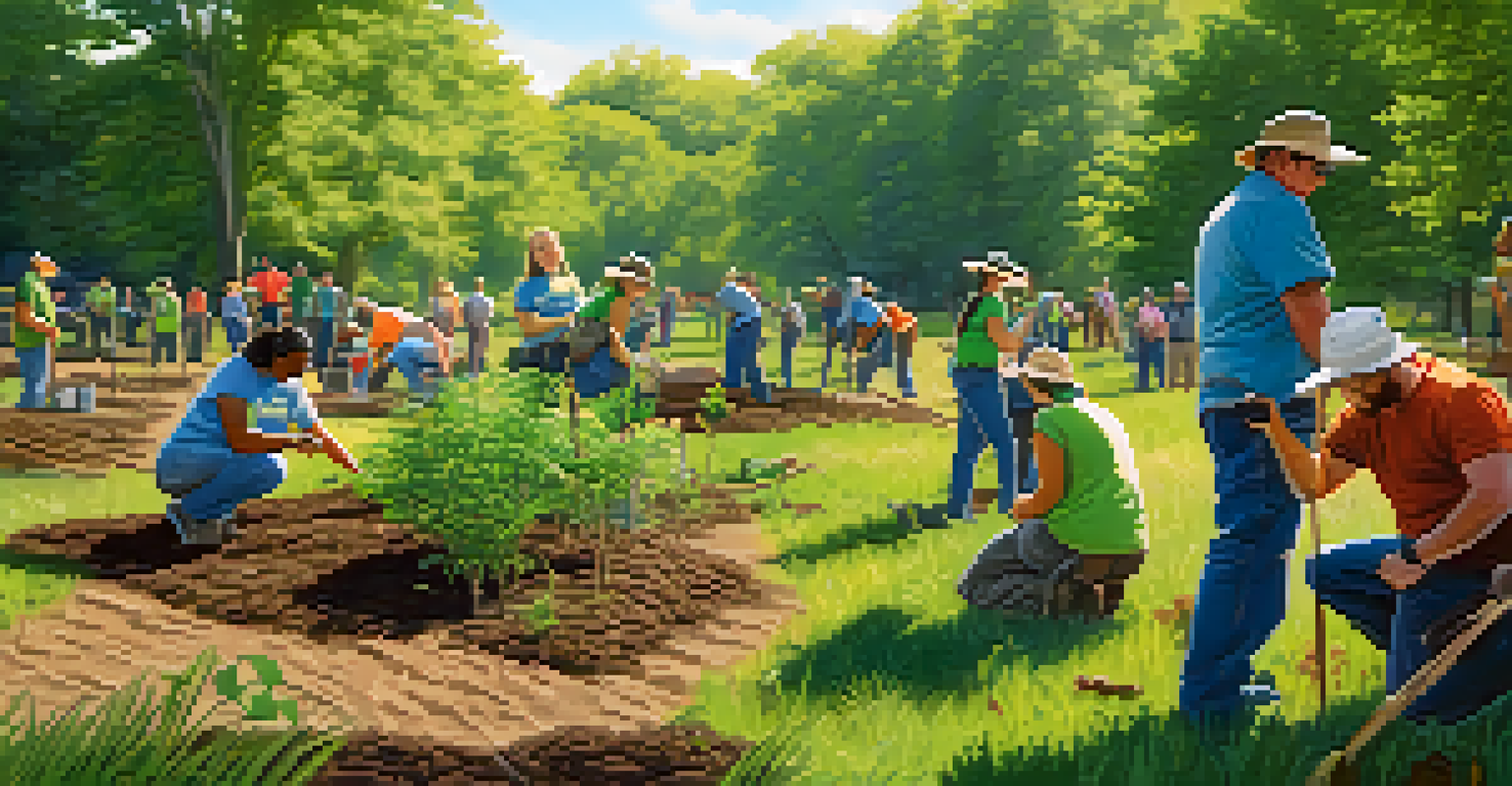Conservation Efforts in Missouri State Parks: A Closer Look

Understanding the Importance of Conservation in Missouri
Conservation plays a crucial role in preserving Missouri's diverse ecosystems. With over 90 state parks, the state boasts a rich tapestry of flora and fauna, offering habitats for countless species. Conservation efforts help maintain these natural environments, ensuring that future generations can enjoy their beauty and benefits.
In every walk with nature one receives far more than he seeks.
Missouri's varied landscapes, from rolling hills to lush forests, are not just visually stunning; they are vital for biodiversity. By protecting these areas, we are also safeguarding the ecosystem services they provide, such as clean air and water. This interconnectedness highlights why conservation is essential for both nature and human wellbeing.
Moreover, conservation efforts foster a sense of community among residents and visitors. Engaging in these initiatives often brings people together, creating a shared mission to protect what they love. It’s not just about saving the environment; it’s also about building lasting relationships within the community.
Key Conservation Programs in Missouri State Parks
Missouri State Parks has implemented several programs focused on conservation, including habitat restoration and wildlife monitoring. These initiatives aim to maintain healthy ecosystems by restoring native plant species and protecting habitats from invasive species. The commitment to these programs is crucial for preserving the natural heritage of the state.

One notable program is the Missouri Conservation Heritage Foundation, which supports various conservation projects across the parks. By funding research and restoration efforts, this foundation plays a pivotal role in ensuring that park ecosystems remain vibrant and resilient. Their projects often involve hands-on activities, inviting the public to participate.
Conservation Preserves Ecosystems
Conservation efforts in Missouri play a vital role in maintaining diverse ecosystems and ensuring future generations can enjoy natural beauty.
Additionally, volunteer opportunities abound within these programs, allowing individuals to contribute directly to conservation efforts. Whether planting native vegetation or participating in clean-up days, these volunteer actions help instill a sense of ownership and responsibility towards the environment.
Success Stories from Missouri State Parks
Several success stories highlight the effectiveness of conservation efforts in Missouri’s state parks. For instance, the restoration of the Long Branch State Park has led to a resurgence in local wildlife, including the return of species that had previously dwindled. These positive outcomes serve as a testament to the hard work of park staff and volunteers.
The earth has music for those who listen.
Another remarkable achievement is the revitalization of the Ozark National Scenic Riverways, where concerted efforts have improved water quality and habitat. This initiative not only benefits aquatic life but also enhances recreational opportunities for visitors. Such successes underscore the impact of dedicated conservation strategies.
These stories are not just about numbers; they reflect a deeper connection to the land and a commitment to preserving it. Each success inspires further action, motivating both the community and visitors to engage in conservation, knowing that their efforts can lead to tangible results.
Community Involvement in Conservation Efforts
Community involvement is a cornerstone of conservation in Missouri State Parks. Local residents often participate in park events, educational programs, and volunteer days, creating a strong bond between people and nature. This involvement not only supports conservation efforts but also educates the public about the importance of preserving natural resources.
In many parks, community-led initiatives have emerged, such as tree planting and invasive species removal. These grassroots efforts are vital for fostering a sense of stewardship, encouraging individuals to take an active role in protecting their environment. Engaging the community makes conservation a shared responsibility.
Community Drives Conservation Success
Local residents actively engage in conservation initiatives, fostering a sense of stewardship and responsibility towards the environment.
Moreover, educational programs in local schools emphasize the significance of conservation from a young age. By instilling these values early on, Missouri is nurturing a generation that values and understands the importance of preserving its natural treasures.
Challenges Facing Missouri State Parks' Conservation Efforts
Despite the successes, conservation in Missouri State Parks faces several challenges. Climate change, for instance, poses significant threats to the delicate balance of ecosystems. Rising temperatures and altered precipitation patterns can disrupt habitats, affecting both wildlife and plant life.
Invasive species also present a formidable challenge, as they often outcompete native species for resources. This competition can diminish biodiversity, leading to ecological imbalances. Addressing this issue requires ongoing monitoring and concerted efforts to manage and remove invasive plants and animals.
Funding limitations can further hinder conservation initiatives. While many programs rely on state budgets and grants, economic fluctuations can impact available resources. This reality underscores the need for sustained community support and innovative funding solutions to ensure the longevity of conservation efforts.
The Role of Technology in Conservation Strategies
Technology has become an invaluable asset in conservation strategies within Missouri State Parks. From drone surveillance to monitor wildlife populations to sophisticated data analysis for tracking environmental changes, technology enhances the effectiveness of these initiatives. These tools allow park managers to make informed decisions and respond quickly to emerging challenges.
Moreover, mobile apps and online platforms now enable visitors to engage with conservation efforts directly. For example, apps that track wildlife sightings foster community participation in monitoring species and habitats. This engagement not only enriches visitor experience but also contributes valuable data to conservation projects.
Technology Enhances Conservation Efforts
The use of technology, such as drones and mobile apps, improves monitoring and engagement in conservation strategies across Missouri State Parks.
The integration of technology also aids in educational outreach, making conservation accessible to a broader audience. Virtual workshops and interactive online content help raise awareness about the importance of preserving Missouri’s natural heritage, inspiring action beyond the parks themselves.
Looking Ahead: The Future of Conservation in Missouri
As we look to the future, the importance of conservation in Missouri State Parks remains paramount. Ongoing efforts will focus on adapting to changing environmental conditions while continuing to protect and restore natural habitats. This adaptability is essential for ensuring the resilience of ecosystems amid uncertainty.
The collaboration between state agencies, conservation organizations, and the community will be crucial in shaping the future of these initiatives. By fostering partnerships and sharing resources, Missouri can enhance its conservation strategies, ensuring comprehensive protection for its state parks.

Ultimately, the future of conservation in Missouri is bright, fueled by dedicated individuals and communities who recognize the intrinsic value of preserving their natural landscapes. Together, they can continue to create a legacy of sustainability and environmental stewardship for generations to come.